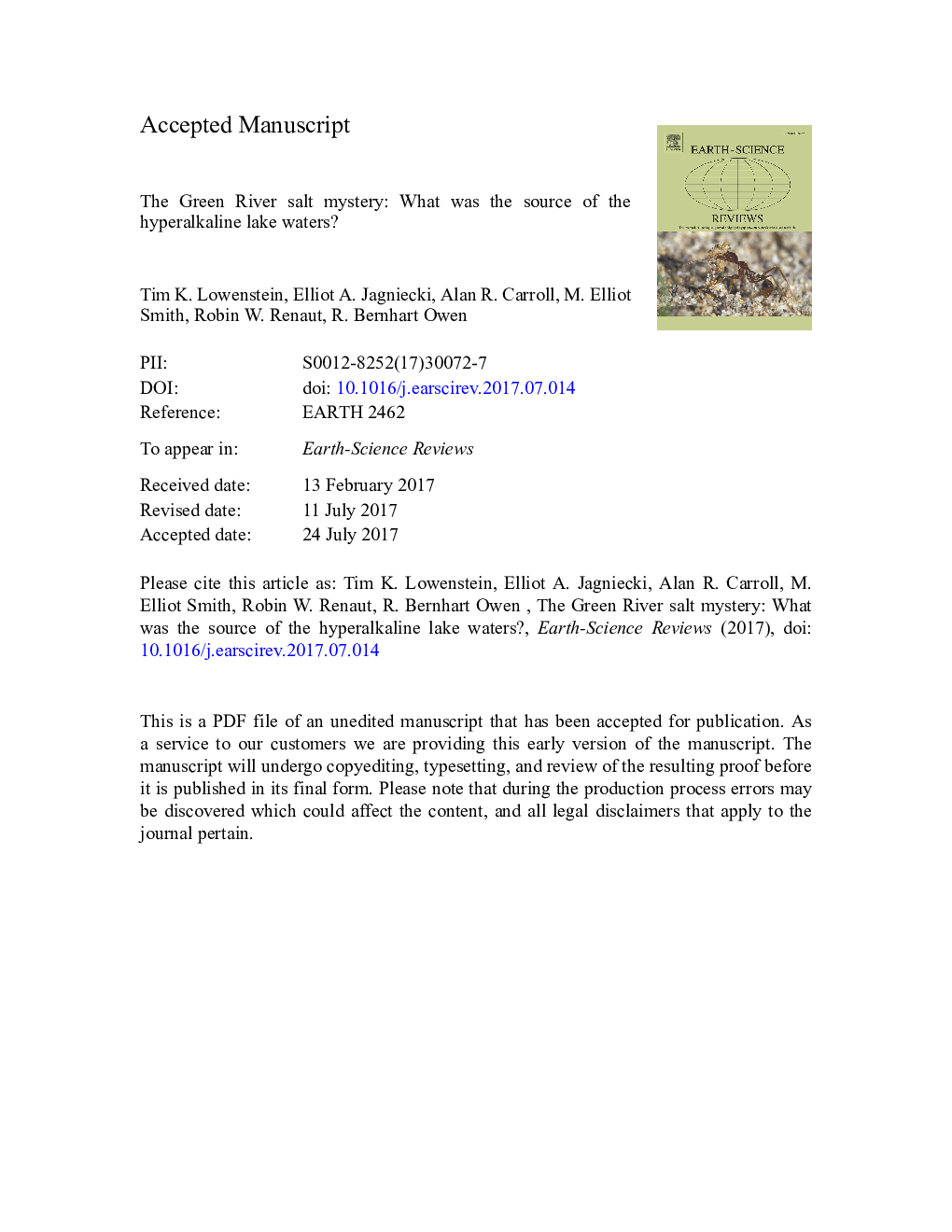| Article ID | Journal | Published Year | Pages | File Type |
|---|---|---|---|---|
| 5785062 | Earth-Science Reviews | 2017 | 47 Pages |
Abstract
Other explanations for the elevated alkalinities needed to form thick sodium carbonate evaporites include accelerated silicate mineral weathering rates during a period of high atmospheric pCO2 and Eocene warmth. Amplified chemical weathering may explain the cluster of sodium carbonate evaporites in the USA and China that are Eocene in age. Another possible source of alkalinity to the Green River lakes is fault-controlled upward migration of a deep sedimentary source of CO2. The large amount of organic matter preserved in the evaporitic Wilkins Peak and Parachute Creek Members raises the possibility that decay of organic matter in Green River lakes could have added sufficient CO2 and alkalinity to produce waters capable of precipitating trona and nahcolite, although such degradation of organic matter has not created hyperalkalinity in modern lakes.
Keywords
Related Topics
Physical Sciences and Engineering
Earth and Planetary Sciences
Geology
Authors
Tim K. Lowenstein, Elliot A. Jagniecki, Alan R. Carroll, M. Elliot Smith, Robin W. Renaut, R. Bernhart Owen,
